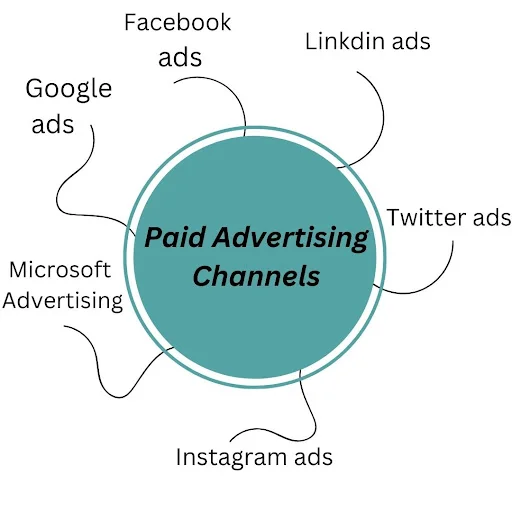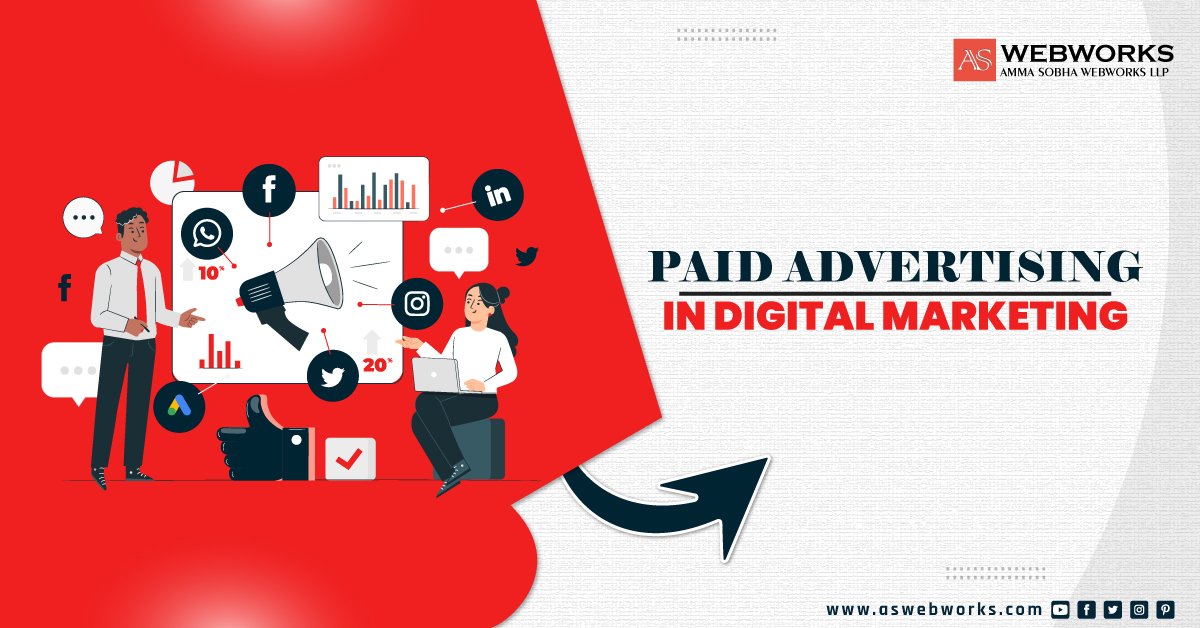Paid advertising is a kind of online advertising where marketers place bids to take part in live auctions for the right to place their adverts on a particular network or platform. Companies pay a publisher each time a user clicks or views one of their advertisements in a search result, on a website, on social media, or on a number of other digital platforms. Through Paid advertising, several well-known platforms are making money from the data they gather. There are several options available, ranging from the well-known Google and Bing to the upstarts Facebook, LinkedIn, and TikTok. These platforms have boosted ad space in recent years after discovering the value of biddable media. If you want to learn more about paid advertising you need to get digital marketing training. You may succeed greatly in digital marketing if you comprehend how it operates and regularly test and optimize. Excellent paid advertising never ends. It is also known as PPC advertising or biddable media. PPC stands for Pay-Per-Click advertising and usually pays every time someone clicks on your ads.
How PPC Advertising Works
Real-time auctions are typically conducted by algorithms on sites that provide paid advertising services. The algorithms select the online advertisement that will run in a particular slot. The criteria can change depending on the platform utilized, but they are frequently a combination of the bid amount and the quality of the adverts. However, there are many additional factors to take into account, and platforms don’t always make the criteria clear. Advertisements can be in text, photos, videos, and many other forms. The pay-per-click model is mostly based on keywords. For example, Online advertisements only show up in search results when a user enters a term associated with the commodity or service being promoted. As a result, businesses that use pay-per-click advertising models investigate and assess the keywords that are most pertinent to their goods or services. Investing in appropriate keywords may lead to more clicks and, ultimately, more revenue.
Paid Advertising Channels
There are lots of different channels of paid advertising that you can explore for lead generation or brand awareness. We’ve included some of the most typical areas that frequently affect results and provided some general guidance on how to use each of them.
There are many online advertising channels out there but here is an overview of the important ones

-
Google Ads-
The most recognizable and established online advertising platform is Google Ads, formerly known as AdWords. You may advertise on the Google search engine, and YouTube, as well as the millions of websites and applications that are a part of its network, thanks to its smart platform. Google matches terms and persons with your advertising using machine learning and the user data it gathers, and they’re really excellent at it!
The platform primarily employs a Pay-Per-Click approach based on your willingness to bid and your quality score, which measures how well your advertising and landing pages perform.SEM, or search engine marketing, targets consumers in Google based on their search queries. Above organic results and highlighted snippets on a SERP (Search Engine Results Page), advertisements are displayed. You pay per click (PPC) for each person who clicks through your ad to your landing page if you prevail in the bidding and performance war. Your ad might display high up on the page. -
Microsoft Advertising-
The operation of Microsoft Advertising, formerly known as Bing Ads, is very similar to that of Google Ads. In reality, Microsoft Advertising allows you to import your Google advertisements. Your advertisements may show up on search results pages from Bing, Yahoo, and MSN as well as on partner websites or online services like Cortana or Amazon devices.
A Pay-Per-Click model is also used by the site, and it combines your bid amount and quality score. Due to the fact that fewer marketers often utilize it than Google, the bids tend to be a little lower. However, as Bing has a lesser market share than Google, you should anticipate less volume than Google, but this might change depending on the nation and sector you’re targeting. -
LinkedIn Ads-
LinkedIn Ads is a platform-wide advertising service that primarily targets professionals. Along with regional and demographic information, you may target individuals based on their job title, the business or sector they work for, or their hobbies. The platform mainly uses a Pay-Per-Click model.
-
Twitter Ads-
Within its platform, Twitter Ads offers advertising opportunities. People may be targeted based on keywords, conversations they participate in, interests, and whether they have previously interacted with your tweets. Additionally, they are built on an auction premise with Pay-Per-Click fees.
-
Facebook Ads-
On various platforms, including Facebook, Messenger, and Instagram, Facebook Ads offers advertising options. Users may be targeted based on a variety of factors, including their hobbies, the pages they like, and even traits related to their friends. They primarily employ a Pay-Per-Click strategy based on live auctions, similar to other platforms. Similar to Instagram, Facebook has advertisements spread out over the whole program, including feeds, Stories, Messenger, Marketplace, and more. They resemble regular postings in appearance, but they are always marked as sponsored to indicate that they are advertisements. Compared to standard posts, Facebook advertisements include additional capabilities, such as CTA buttons, links, and product catalogs.
Benefits of Paid Advertising:
We’ve listed a few of its advantages below to assist you in understanding how paid advertising will advance your business.
1. Make your website rank on the first page of SERPs:
You might have noticed PPC advertisements on the first page of search results when you use search engines like Google and Yahoo to look up different topics. PPC advertisements help your website in this way. As most consumers would click on one of the first few results rather than scrolling deeper, it propels your company to the top of search engine result pages. You may attract more clients to your business the more people click on your adverts.
2. Instant Targeted Traffic:
If you are new to the realm of virtual marketing, it will take some time to generate organic traffic for your company. However, PPC allows you to quickly increase your company’s visibility and deliver targeted visitors.
3. Match Your Budget:
You can create a PPC campaign based on your budget, as there is no limit to the amount you can invest in creating an effective campaign. You get to choose how much you want to spend on a click.
4. Keyword Branding:
You may use PPC to target certain keywords related to your sector. People who use certain keywords in their searches can view your advertising. Associating your brand with something that people remember may greatly improve your marketing strategy.
5. Good for Local Searchers:
Customers using their smartphones to seek items and services can click on your adverts and visit your business to purchase what they require. According to one study, more than 75% of clients visit your physical store on the same day they discover your company online. As a result, ensure that your PPC campaign is successful enough to attract a larger audience.
Conclusion –
Paid advertising is a type of marketing where ad campaigns are funded with the goal of reaching a certain audience. It is one of the greatest strategies for obtaining clients swiftly and for enhancing outcomes as well. A necessary component of any sales and marketing funnel is paid to advertise. There are several options, platforms, paid ad kinds, and campaign types available. Make a call, but only choose one or two. Don’t oversimplify your message. You may customize your brand and message any way you see fit with sponsored advertisements, and you can continuously test to determine what works and what doesn’t. Paid advertisements are among the most crucial channels in your digital marketing plan, but in order to get results and turn leads into consumers, they must be handled correctly.

